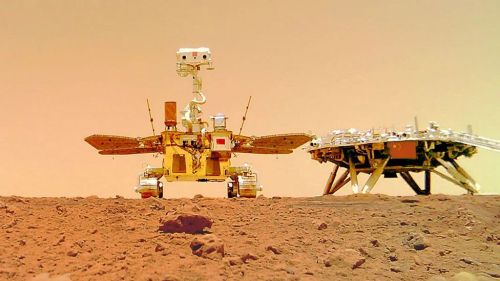
There are currently no less than three rovers active on the surface of Mars: NASA’s Perseverance and Curiosity rovers, along with China’s Zhurong rover. Now, it looks like these three will continue exploring for some time to come, as Zhurong has just had its mission extended.
Zhurong, which is named after a traditional Chinese fire god, was originally intended to explore Mars for 90 days. The rover rolled onto the surface for the first time on May 22 this year after landing on May 14, and the 90-day mission period was completed on August 15. The rover is still active and working, though, so the Chinese National Space Administration announced on Friday, August 20, that the rover’s mission would continue.
The agency also confirmed that the rover is technically sound and fully charged, so it’s ready to do more science. The charging is a concern as Zhurong is solar-powered, unlike NASA’s two rovers, which are nuclear charged. That means Zhurong relies on the weak sunlight that reaches Mars to generate its power, though it can help boost its power levels by turning its solar panels to face the sun.
Since its arrival, Zhurong has captured images of the Martian surface and snapped a selfie there. It has also rolled past its parachute and backshell while exploring the Utopia Planitia area where it landed.
Part of Zhurong’s mission is to search for ice beneath the Martian surface and to investigate the Martian rocks to look for clues to the history of water on Mars. The chief designer for the mission, Liu Jianjun, said that data collected so far could provide information about these open questions. “Hopefully, by providing these data to our scientists, we can get a deeper understanding of the geology of Mars, and then even see if we can find evidence of the existence of an ancient ocean in Utopia Planitia,” he said.
The rover has also collected information about the Martian atmosphere and weather, including finding that the atmosphere there may be even thinner than previously thought.
Editors' Recommendations
- Final communications sent to the beloved Ingenuity Mars helicopter
- It’s exactly 20 years since a Mars rover took this historic image
- NASA is looking for volunteers for yearlong simulated Mars mission
- Yes, Perseverance is exploring an ancient lake bed but no, it hasn’t found signs of life (yet)
- NASA video celebrates Mars helicopter following its final flight